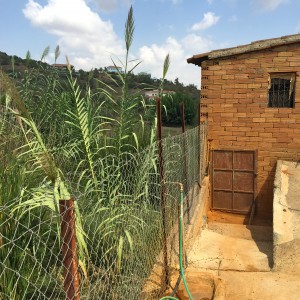 Robert Burns is not only Scotland’s best known poet and songwriter but one of the most widely acclaimed literary figures of all time. He is held in very special affection by millions around the world, with Burns’ suppers taking place on or near his birthday on the 25th January.
Robert Burns is not only Scotland’s best known poet and songwriter but one of the most widely acclaimed literary figures of all time. He is held in very special affection by millions around the world, with Burns’ suppers taking place on or near his birthday on the 25th January.
Stature
 Burns’ stature owes much to the huge range of his songs and poems, some of which are still familiar nearly two hundred and fifty years after his birth. In fact, there would be few English speaking people who do not recognise “Auld Lang Syne” – a staple at New Year celebrations.
Burns’ stature owes much to the huge range of his songs and poems, some of which are still familiar nearly two hundred and fifty years after his birth. In fact, there would be few English speaking people who do not recognise “Auld Lang Syne” – a staple at New Year celebrations.
His popularity is also linked to his association with a brand of socialism radical for his time and timeless in its understanding of the plight of the common man. Burns would have naturally understood these issues having experienced hardships not untypical for the ordinary man of the eighteenth century.
Birth & Youth
He was born in 1759 in the village of Alloway, in Ayrshire and was the son of a small farmer, Jacobite in sympathies, who had moved from near Stonehaven in Kincardineshire. In Scots rural tradition – which Burns himself recognised in “The Man’s the Gowd for A’ that” – and probably because of his father’s support of education, Burns had a fairly extensive education. He attended several schools and was given lessons from his tutor, John Murdoch, who introduced him to Scots and other literature in the English language. The family was never wealthy, living on and scraping a bare living from poor farming land. When Burns’ father died in 1784, he and his younger brother, Gilbert, tried and failed to make a success of farming at Mossgiel, near Mauchline. Also at this time, Burns began what was to be a stormy relationship with Jean Armour whom he left and betrayed many times.
His intensity, bred of hardships, seems to have caused Burns to produce some of his finest literary achievements. With a formal educational background, supplemented by a desire to read great literature and an admiration for the work of Allan Ramsay the elder, and steeped in Scots traditional ballads and legends, Robert Burns began to create his earliest and some of his best loved poems.
Poetry & Fame
In 1785 and 1786 alone, Burns wrote, amongst other works, ‘The Address to a Mouse‘, ‘Holy Willie’s Prayer‘, ‘The Cotter’s Saturday Night‘ and ‘The Twa Dogs‘ and published his later famous Kilmarnock Edition with the intention of emigrating to Jamaica to seek a better existence. However, the popular response to his book of poems attracted him to Edinburgh to receive the adulation of the polite society of the capital, who became fascinated by the ‘ploughman poet’ and dubbed him “Caledonia’s Bard”. 3,000 copies of his Edinburgh Edition of poems were selling well at this time.
In 1787, he first visited Dumfries and was immediately made an honorary burgess. In 1788, unsure of making a living from the pen, he signed a lease on Ellisland Farm on the banks of the Nith and sought employment as an Exciseman. This was a latter day VAT man and Burns used his income to supplement his farm. His health was variable but during that time, he edited – with James Johnson – the second edition of the ‘Scots Musical Museum’. It was published in 1788 and contained 40 of his own songs. The third volume, which appeared in the following year, had 50 more.
 Burns asked Captain Francis Grose who was compiling a book on the antiquities of Scotland to include an illustration of Alloway Kirk. Grose agreed provided the poet would contribute a ‘witch story’ to accompany the drawing. The result was ‘Tam O’Shanter’. The poem was written in a single day on the banks of the Nith and is arguably one of his best works.
Burns asked Captain Francis Grose who was compiling a book on the antiquities of Scotland to include an illustration of Alloway Kirk. Grose agreed provided the poet would contribute a ‘witch story’ to accompany the drawing. The result was ‘Tam O’Shanter’. The poem was written in a single day on the banks of the Nith and is arguably one of his best works.
After two years, Burns gave up the farm and moved to Dumfries as a full-time Exciseman. During this time, Burns had at least one major affair and sired a daughter whom his own wife agreed to raise. Burns led an erratic lifestyle, being alternately drawn to and repelled by the bourgeois lifestyle. He wrote poems in English instead of his vernacular Scots, and flirted with ‘Clarinda’, Agnes McLehose.
 In May 1793 the family moved to a better quality house in Mill Street (now Burns Street). Their standard of living was good and they employed a maid servant. He was now writing songs for a new book ‘A Select Collection of Original Scottish Airs’ produced by George Thomson. At the same time, some of his most lasting songs like ‘My Luve is like a Red, Red Rose‘ and others set to traditional airs, which revived the words and tales of ballads, were produced.
In May 1793 the family moved to a better quality house in Mill Street (now Burns Street). Their standard of living was good and they employed a maid servant. He was now writing songs for a new book ‘A Select Collection of Original Scottish Airs’ produced by George Thomson. At the same time, some of his most lasting songs like ‘My Luve is like a Red, Red Rose‘ and others set to traditional airs, which revived the words and tales of ballads, were produced.
Ill Health & Death
The war with France was causing food shortages in Britain. In March 1796 there were serious food riots in Dumfries. Gradually, during the year, Burns’ health became poorer and in April he was unable to continue with his Excise duties. His friend Dr Maxwell mistakenly diagnosed his illness as “flying gout” and prescribed sea bathing as a cure. On the morning of Thursday 21st July he became delirious. His children were brought to see him for a last time and shortly afterwards he lapsed into unconsciousness and died. He was 37 years old.
It was the intention of friends that a biography of Burns should be written as soon as possible and the profits used to aid Mrs Burns. Dr James Currie, a Liverpool physician, who came originally from Annan, was chosen as biographer. The biography, published in 1800, was an immediate success and raised £1400. However, when Dorothy and William Wordsworth visited Dumfries in 1803 they had difficulty in even finding Burns’s grave. So, in 1813 subscriptions were sought. One of the subscribers was the Prince Regent, later George IV. On the 19th September 1815 Burns’ body was exhumed and placed in the new mausoleum. In 1823 the cenotaph on the banks of the Doon at Alloway, Burns’ birthplace, was completed at a cost of £3300. In 1844 a huge festival in his honour was held at Alloway, presided over by the Earl of Eglinton. The centenaries of his birth in 1859 and his death in 1896 saw nationwide celebrations.
Reputation
The cult of Burns rapidly rose. As the ‘National Bard’ he assumed spiritual dimensions, becoming all things to all people – admired as poet, nationalist, democrat, republican, conversationalist, womaniser, drinker, naturalist, folklorist, lyricist, Freemason and atheist to name a few. His humble origins, in particular as the ‘heaven taught ploughman’, have added to the idolatry.
Timeline
1759 January 25 Robert Burns born at Alloway
1781 Works as a flax-dresser in Irvine
1782 Returns to Lochlea after the burning of the Irvine shop
1784 Father dies. Robert moves to Mossgiel. Meets Jean Armour
1785 Birth of Elizabeth, daughter by servant Betty Paton. Writes To a Mouse. Affair with Highland Mary Margaret Campbell.
1786 Kilmarnock Poems published. Re-unites for a time with Jean Armour. Plans emigration to Jamaica. Stays in Edinburgh. Jean remains with family in Mauchline.
1787 Edinburgh Edition of Poems
1788 Ellisland Farm, Dumfries. Commissioned as exciseman. Marries Jean Armour. Writes Auld Lang Syne.
1790 Tam o’ Shanter completed
1791 Jean and Robert move to Dumfries
1792 Accused of political disaffection during revolutionary commotion in Dumfries.
1793 Second Edinburgh edition of Poems
1795 Ill with rheumatic fever
1796 July 21 Burns dies at Dumfries
1796 July 25 Son Maxwell born on day of his funeral
Images © Scottish National Portrait Gallery, Trustees of Burns Monument & Burns Cottage, Bayley & Ferguson Ltd| Licensor Scran






































 aturday 19th September 2015. After such a full day in the capital, we stayed local and visited the neighbouring village of Kato Drys. Firstly, we went to the top of Sotira hill, behind Lefkara to get panoramic view across the Larnaca District and surrounding landscape and visited the tiny church perched there. It had some charming icons dating from the early C20th.
aturday 19th September 2015. After such a full day in the capital, we stayed local and visited the neighbouring village of Kato Drys. Firstly, we went to the top of Sotira hill, behind Lefkara to get panoramic view across the Larnaca District and surrounding landscape and visited the tiny church perched there. It had some charming icons dating from the early C20th.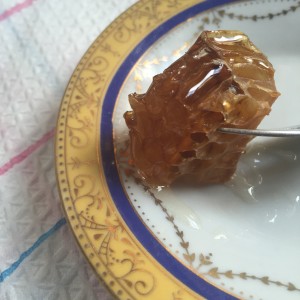



 We made an early morning visit to the silversmiths in Lefkara and learned about their processes, which are mostly mechanised but involved all sorts of materials, rubber, wax, plaster and of course silver. The workshops were very interesting but we could not linger. Adriana had to get us to the airport for our incredible journey home to Glasgow, via Stansted. I’m glad to say on our way to Paphos she took us to see Aphrodite’s Rock, the ideal way to say goodbye & ευχαριστώ
We made an early morning visit to the silversmiths in Lefkara and learned about their processes, which are mostly mechanised but involved all sorts of materials, rubber, wax, plaster and of course silver. The workshops were very interesting but we could not linger. Adriana had to get us to the airport for our incredible journey home to Glasgow, via Stansted. I’m glad to say on our way to Paphos she took us to see Aphrodite’s Rock, the ideal way to say goodbye & ευχαριστώ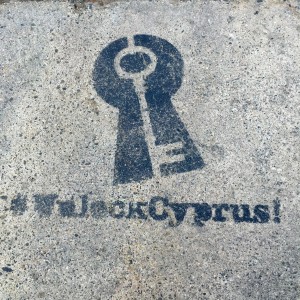 earing the capital city of Cyprus I was surprised to see a giant Turkish Cypriot flag painted onto the side of the Kyrenia Mountains – what a statement. Following the conflict of 1974, the Turkish Republic of Northern Cyprus TRNC became a self-declared state, however it is only recognised by Turkey. The political and military dispute in Cyprus remains unresolved and the island continues with life, divided. The Green Line runs 112 miles from east to west across the island, splitting families, property and communities.
earing the capital city of Cyprus I was surprised to see a giant Turkish Cypriot flag painted onto the side of the Kyrenia Mountains – what a statement. Following the conflict of 1974, the Turkish Republic of Northern Cyprus TRNC became a self-declared state, however it is only recognised by Turkey. The political and military dispute in Cyprus remains unresolved and the island continues with life, divided. The Green Line runs 112 miles from east to west across the island, splitting families, property and communities.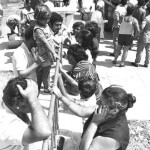
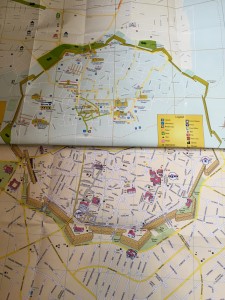 Nicosia is a vibrant & sophisticated city, with a buzz in the streets. Trendy shops & coffee houses lined the artists’ quarter. After a little pick-me-up in the form of some Cyprus coffee, μέτριο for me please, we neared the Green Line. Passports at the ready we crossed over to the north side of the city through two sets of border control, Greek & Turkish. It was easy enough the pass through, plenty of tourists and locals alike were going to & fro. Yet, CCTV was evident, uniformed armed guards were on duty & signage warned us that photography was strictly forbidden in this narrow
Nicosia is a vibrant & sophisticated city, with a buzz in the streets. Trendy shops & coffee houses lined the artists’ quarter. After a little pick-me-up in the form of some Cyprus coffee, μέτριο for me please, we neared the Green Line. Passports at the ready we crossed over to the north side of the city through two sets of border control, Greek & Turkish. It was easy enough the pass through, plenty of tourists and locals alike were going to & fro. Yet, CCTV was evident, uniformed armed guards were on duty & signage warned us that photography was strictly forbidden in this narrow


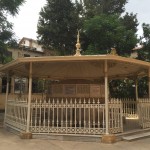
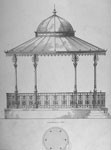
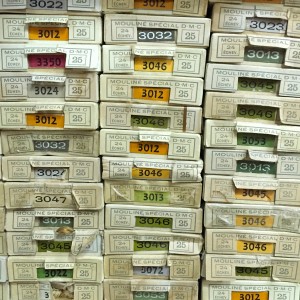 Not only is she a successful businesswoman, but Senaye also works on bi-communal projects, using craft to bring together Cypriots from both sides of the divide and trains up young apprentices too. Thereby generating hope for the future and breaking down barriers. Later we visited the amazing Yagcioglu haberdashery, which stocked the all-important
Not only is she a successful businesswoman, but Senaye also works on bi-communal projects, using craft to bring together Cypriots from both sides of the divide and trains up young apprentices too. Thereby generating hope for the future and breaking down barriers. Later we visited the amazing Yagcioglu haberdashery, which stocked the all-important 

